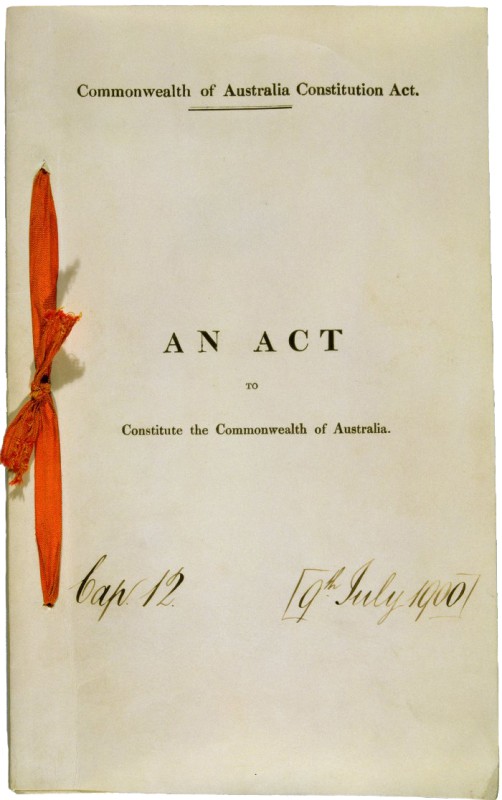How does the Australian Constitution reflect the values of the Australian people?

Commonwealth of Australia Constitution Act, 1900: Original Public Record Copy (1900).
Parliament House Art Collection, Art Services Parliament House
Commonwealth of Australia Constitution Act, 1900: Original Public Record Copy (1900).

Parliament House Art Collection, Art Services Parliament House
Description
This image shows the front page of the original public record copy of the Commonwealth of Australia Constitution Act 1900.
Permission for publication must be sought from Parliament House Art Collection. Contact DPS Art Services, phone: 02 62775034 or 02 62775123
The Australian Constitution doesn’t directly list Australian values, although it does include features that support important principles. For example:
- Elections are established by section 41 (electors have the right to vote), and sections 8 and 30 (each elector has one vote).
- Freedom of religion is included in section 116.
- Trial by jury is guaranteed by section 80.
- Fair treatment when the government acquires property is outlined in section 51(xxxi), which says it must be done on just terms.
The Constitution explains how Australia’s system of government works. It sets out the rules for how laws are made, what areas the Australian Parliament can make laws about, how power is shared between the Parliament and the states, and how Parliament is structured.
Because the Constitution doesn’t directly state the values of the Australian people, the Parliament has the power to make, change and repeal – cancel – laws to reflect Australia's changing values. For example, the Constitution doesn’t mention women, but over time Parliament has passed laws to support gender equality, including changing laws to give women equal rights to vote and work.